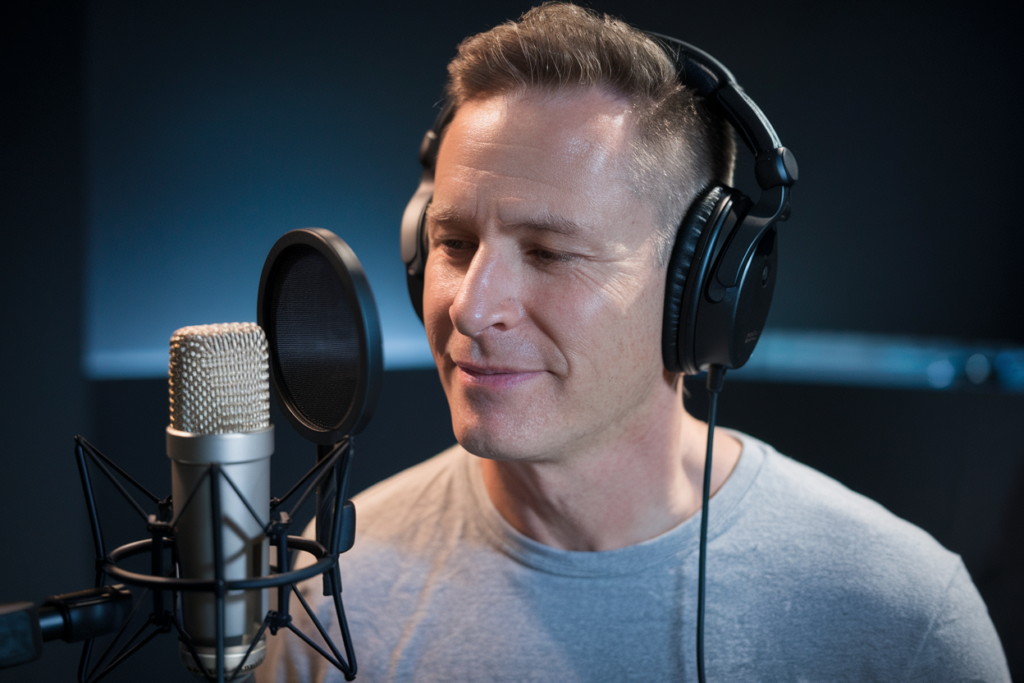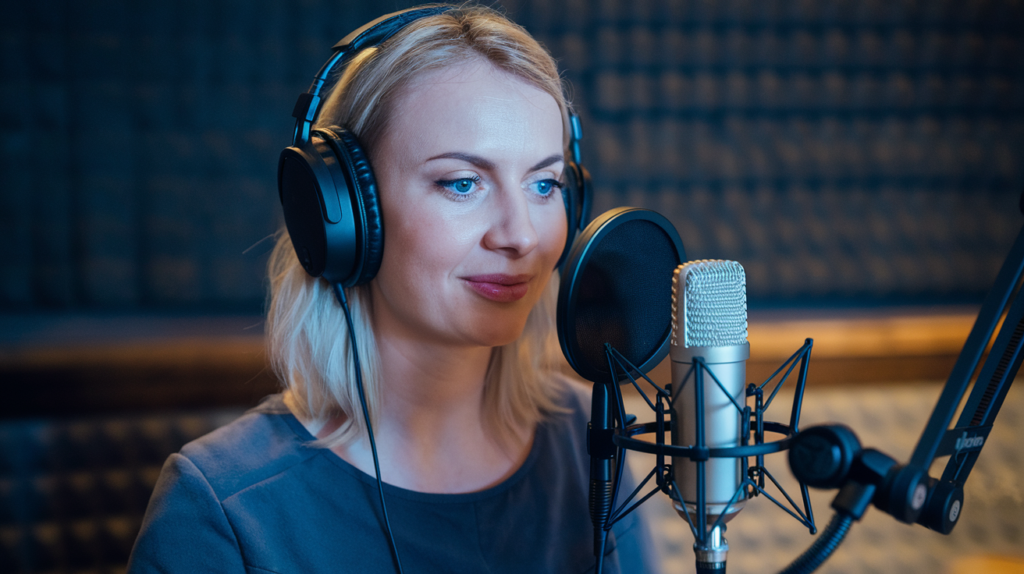Key Takeaways
- Understanding Video Dubbing: Video dubbing replaces original audio with a new track, enhancing accessibility for Polish audiences and improving viewer engagement.
- Importance of Lip Syncing: Accurate lip syncing ensures that audio matches visual cues, maintaining narrative integrity and preventing audience distraction.
- Preparation Steps: Selecting clear dialogue videos and analyzing the original audio track are crucial for effective Polish lip syncing, ensuring natural flow and emotional expression.
- Effective Techniques: Master timing, rhythm, and phonetics to achieve seamless synchronization; practice regularly to enhance dubbing quality.
- Essential Tools & Software: Utilize tools like Adobe Audition and Final Cut Pro along with quality hardware (microphone, audio interface) to produce professional-quality voiceovers.
- Common Challenges: Address language differences in phonetics and maintain emotional authenticity during dubbing to create impactful content for Polish viewers.
Ever wondered how to make your videos shine with perfect Polish lip syncing? Video dubbing can be a game changer, but getting those lips to match the words is no easy feat. Whether you’re creating content for YouTube or adding polish to a film project, mastering this skill can elevate your work and engage your audience like never before.
In this guide, you’ll uncover essential tips and techniques that simplify the video dubbing process. You’ll learn how to sync audio and visuals seamlessly while maintaining the natural flow of speech in Polish. Say goodbye to awkward mismatches and hello to professional-quality dubbing that captivates viewers! Let’s dive in and transform your videos into polished masterpieces together.
Understanding Video Dubbing
Video dubbing involves replacing the original audio track with a new one, typically in a different language. Mastering this process means enhancing your content’s accessibility and reach, especially for Polish audiences.
The Importance of Lip Syncing
Lip syncing plays a crucial role in video dubbing. Accurate synchronization ensures that the audio matches the visual cues, making it easier for viewers to connect with the characters. A mismatch can distract audiences and diminish their overall experience. When you prioritize lip syncing, you enhance engagement and maintain the integrity of your storytelling.
Key Terminology in Dubbing
Familiarizing yourself with key terminology is essential for effective video dubbing:
- Voiceover: A production technique where a voice narrates or dialogues are recorded over visuals.
- Voice Talent: Refers to individuals skilled at delivering lines effectively; they bring scripts to life using tone and emotion.
- Voice Artist: Professionals who specialize in creating engaging voiceovers across diverse projects.
- Voice Actor: An individual trained specifically to portray characters through voice alone; their skills add depth to any project.
Understanding these terms helps streamline communication during the dubbing process, ensuring clarity between creators and talent involved.
Preparing for Polish Lip Syncing
Preparing for Polish lip syncing involves several key steps that ensure seamless audio-visual synchronization. Proper preparation lays the groundwork for a successful dubbing experience, enhancing both the quality of your project and viewer engagement.
Selecting the Right Video
Selecting the right video is crucial for effective lip syncing. Choose content with clear dialogue and expressive facial movements. Videos featuring varied emotional expressions can help voice actors convey emotions accurately while maintaining alignment with visuals. Consider the pacing of speech as well; slower dialogues often provide more time for precise lip sync adjustments. If you’re working on a film or series, prioritize those with strong narratives that resonate with Polish audiences.
Analyzing the Audio Track
Analyzing the audio track helps you understand timing and delivery styles needed for effective dubbing. Listen closely to identify emotional tones, accents, and inflections used by voice actors in the original language. Pay attention to rhythm and pauses; these elements significantly influence how well your voiceover talent can match their performance to character movements on screen. Noting specific moments where emphasis occurs also aids in creating a natural flow during recording sessions. By grasping these nuances, you set up your project for greater authenticity in translation and performance.
With careful selection of video content and thorough analysis of audio tracks, you’ll position yourself well to achieve high-quality results in Polish lip syncing projects.
Techniques for Effective Lip Syncing
Mastering lip syncing techniques enhances the quality of Polish dubbing. You can achieve seamless audio-visual synchronization by following these essential methods.
Timing and Rhythm
Timing plays a pivotal role in effective lip syncing. Ensure that the spoken words align perfectly with the character’s mouth movements. Pay attention to the rhythm of speech; natural pacing keeps your audience engaged. For instance, if a character delivers dialogue quickly, match it with rapid mouth movements. Conversely, slower dialogues require more deliberate facial expressions. Utilize video editing tools to adjust timing accurately, enabling you to shift audio segments without losing coherence.
Matching Phonetics
Matching phonetics is crucial for authentic lip syncing. Focus on replicating vowel and consonant sounds that correspond with visual cues from the original footage. This technique requires careful analysis of how different sounds affect mouth shapes and movements. Record voiceovers that mimic these phonetic patterns closely, ensuring they mirror what viewers see on screen. Practicing frequently will improve your ability to create convincing matches, enhancing overall viewer satisfaction in your Polish dubbing projects.
By applying these techniques consistently, you’ll elevate your dubbing quality and keep audiences captivated throughout your content.
Tools and Software for Dubbing
Selecting the right tools and software is crucial for achieving high-quality Polish lip syncing in video dubbing. Various options cater to different needs, from basic editing to advanced audio manipulation.
Popular Dubbing Software
- Adobe Audition: This professional-grade audio editing software offers robust features for voiceover work, including noise reduction, multitrack mixing, and various effects. It allows you to fine-tune your recordings for a polished final product.
- Final Cut Pro: Known primarily as a video editing tool, Final Cut Pro includes powerful audio editing capabilities that enable seamless integration of voiceovers with video tracks, ensuring perfect synchronization.
- Audacity: A free, open-source software ideal for beginners or those on a budget. Audacity provides essential tools for recording and editing voice talent, making it easier to produce clear audio tracks.
- Camtasia: This user-friendly screen recording and video editing software includes features specifically designed for adding voiceovers to videos. Camtasia’s intuitive interface simplifies the dubbing process.
- Reaper: An affordable Digital Audio Workstation (DAW), Reaper supports multi-track recording and offers a comprehensive set of tools that can enhance your dubbing projects with precision.
Hardware Requirements
- Microphone: A quality condenser microphone captures detailed sound necessary for professional-sounding voiceovers. Look for microphones known for their clarity and frequency response.
- Audio Interface: An external audio interface improves sound quality by converting analog signals into digital formats more effectively than built-in computer sound cards.
- Headphones: Closed-back headphones help you monitor recordings without echo or bleed into the mic during sessions while ensuring accurate playback monitoring during edits.
- Pop Filter: This simple accessory reduces plosive sounds (like «p» and «b») during recordings, enhancing overall vocal clarity in your dubbing projects.
- Boom Arm or Stand: A boom arm or adjustable stand stabilizes your microphone position during recordings, allowing flexibility while maintaining consistent audio input levels.
Using these tools and adhering to hardware requirements positions you well on the path toward successful Polish lip syncing in video dubbing projects, creating engaging content that resonates with viewers effectively.
Common Challenges in Polish Lip Syncing
Polish lip syncing presents unique challenges that can impact the quality of your video dubbing. Understanding these hurdles is essential for achieving seamless synchronization between audio and visuals.
Dealing with Language Differences
Language differences often create obstacles during the dubbing process. Polish has distinct phonetic structures compared to English or other languages, which means that direct translations may not always match the original dialogue’s rhythm or mouth movements. You might find that certain phrases don’t align well with a character’s lip movements, leading to mismatched expressions.
Adapting dialogue to fit lip sync requirements involves creative rephrasing while retaining the original meaning. This requires expertise from voice talent who understand both languages’ nuances and can make adjustments without losing emotional impact.
Maintaining Original Emotion
Preserving emotion during dubbing is crucial for audience engagement. When adapting content for Polish viewers, you must ensure that the voiceover reflects the same feelings as in the original version. Subtle cues like tone, pitch, and pacing contribute significantly to this emotional authenticity.
Voice actors play a vital role here; they must embody characters’ emotions while aligning their vocal performance with visual cues on screen. Achieving this balance isn’t easy—sometimes it takes multiple takes and careful direction to capture just the right feel for each scene.
By recognizing these common challenges in Polish lip syncing—language differences and maintaining original emotion—you can better prepare yourself for successful video dubbing projects that resonate with audiences.
Conclusion
Mastering Polish lip syncing can transform your video dubbing projects and elevate viewer engagement. By focusing on the techniques discussed you can ensure that audio aligns seamlessly with visuals while preserving the original emotion of the content.
Choosing the right tools and understanding the unique challenges of Polish phonetics will further enhance your dubbing quality. With practice and attention to detail you’ll create professional results that resonate with your audience, making your content accessible and enjoyable. Embrace these strategies to make your next project a success.
Frequently Asked Questions
What is Polish lip syncing in video dubbing?
Polish lip syncing is the technique of aligning spoken audio with a character’s mouth movements in video content. This process ensures that the dialogue appears natural and engaging for viewers, especially when translating from another language. Mastering this skill enhances the overall quality of dubbed videos.
Why is mastering lip syncing important for creators?
Mastering lip syncing is crucial because it significantly improves viewer engagement and storytelling integrity. Proper synchronization between audio and visual elements makes the content look professional, helping creators connect better with their audience, especially on platforms like YouTube.
What are some tips for effective Polish lip syncing?
To achieve effective Polish lip syncing, focus on timing and rhythm to align words with mouth movements accurately. Analyze the original audio track to grasp its delivery style and emotional tones. Consistent practice will help you replicate phonetics that match visual cues seamlessly.
What tools do I need for high-quality dubbing?
Essential tools for high-quality dubbing include reliable software like Adobe Audition or Audacity for editing, along with hardware such as a good condenser microphone, audio interface, closed-back headphones, a pop filter, and a boom arm or stand to ensure professional sound quality.
What challenges arise in Polish lip syncing?
Challenges in Polish lip syncing include differences in phonetic structures compared to English, leading to potential mismatches in rhythm and mouth movements. Additionally, maintaining emotional authenticity while adapting dialogue can be complex but is essential for keeping audience engagement intact.







